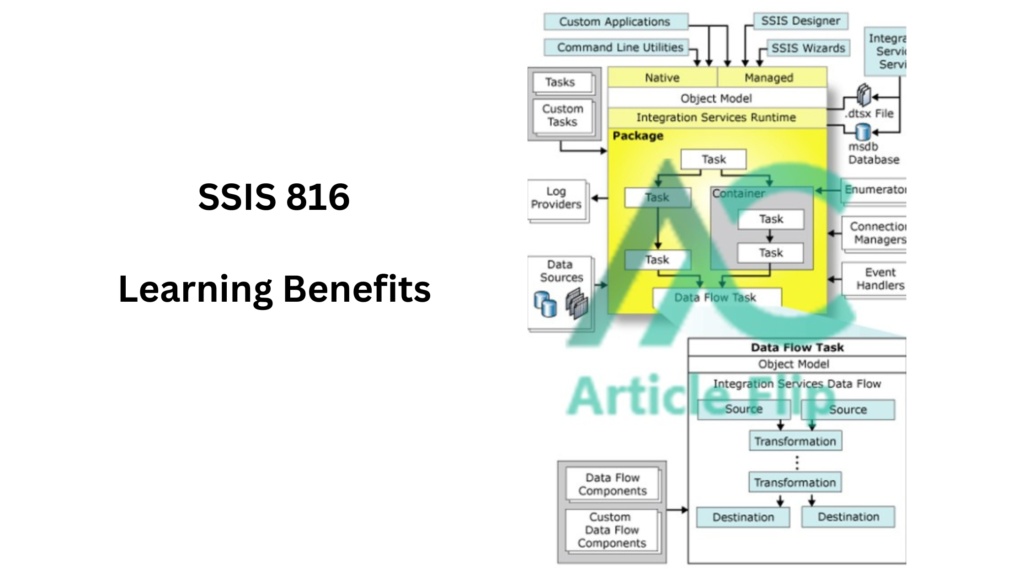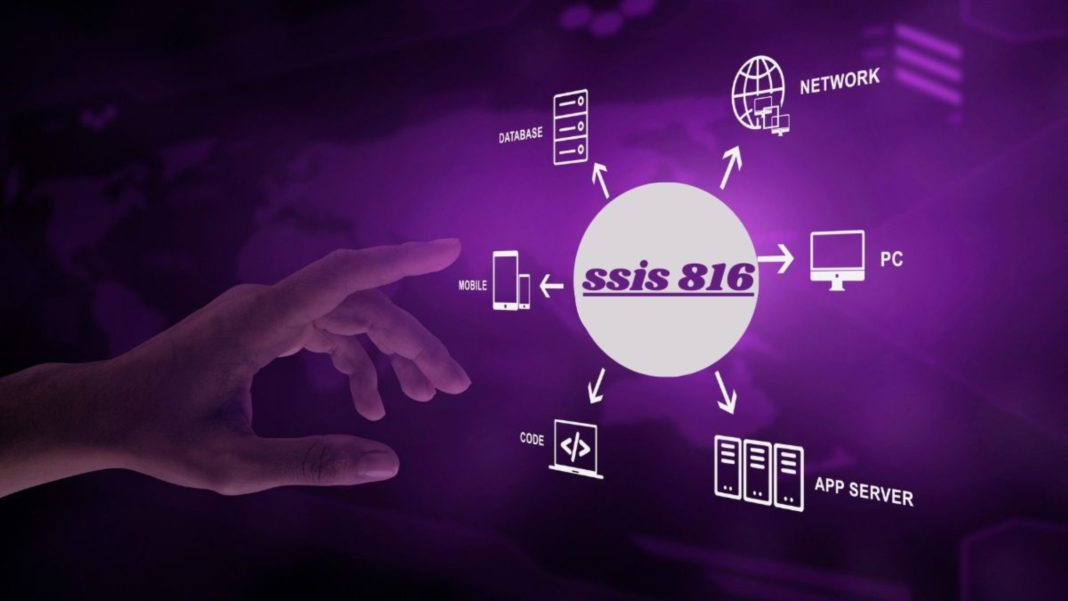In today’s data-centric environment, the seamless flow of information is the lifeblood of every business. As data volumes surge and data sources diversify, the ability to consolidate and utilize this information becomes increasingly complex. This is where SQL Server Integration Services (SSIS) step in—specifically, the latest iteration, SSIS 816. Despite the significant version number increment, this upgrade is more than just a numerical adjustment. It reflects a world of difference regarding capabilities and efficiency for data engineers and database administrators. Let’s explore the empowerment this tool brings to data integration and its pivotal role in the modern data landscape.
Understanding SSIS 816:

At its core, SSIS 816 is a cornerstone tool designed by Microsoft to facilitate data integration within the SQL Server suite. It offers a robust platform for implementing data warehousing ETL (Extract, Transform, Load) solutions, data integration and transformation from diverse sources, and automated orchestration of business intelligence operations. More than just a ‘pipe’ through which data flows, this serves as a handy instrument to clean, consolidate, and enrich your data before reaching its destination.
Key Features and Capabilities of SSIS 816:
- Enhanced Performance: It boasts improved data pipeline performance and processing speeds, allowing quicker ETL operations and fresher data availability.
- Extension and Customization: The 816 version offers more extensibility and a comprehensive range of customization, allowing developers to tailor their ETL processes precisely to their needs.
- Modern Ecosystem Integration: Seamless collaboration with Azure Data Factory, Azure Synapse Analytics, and Azure Blob Storage expands SSIS 816’s reach to the cloud, enabling hybrid data integration scenarios.
- Monitoring and Management: New features in logging, execution, and detailed diagnostic reporting enhance the manageability and monitoring of your data integration workflows.
Benefits of SSIS 816:
This latest edition of SSIS is not just a minor improvement; it’s a game-changer for your data integration strategy. Its benefits include:

- Efficient Data ETL: SSIS 816 streamlines the ETL process, saving time on data movement and transformation tasks allowing you to focus on analytics and insights.
- Complex Integration Support: Scaling up to match the most complex data integration scenarios, SSIS 816 can easily handle diverse data sources and transformations.
- Enhanced Performance and Scalability: New pipeline enhancements and performance tuning options ensure SSIS 816 can grow with your data needs.
- Integration with the Microsoft Stack: SSIS 816 with Azure and other Microsoft tools creates a powerful synergy, ensuring interoperability and future-proofing your investments.
Best Practices:
To make the most of SSIS 816, observing best practices is paramount:
- Robust Workflow Design: Plan your SSIS 816 workflows carefully, using the tool’s parallel processing capabilities for enhanced performance.
- Task Optimization: Leverage built-in components and tasks to avoid “reinventing the wheel” and dramatically simplify your data integration tasks.
- Exception Handling and Data Validation: Establish robust error handling and data validation practices to ensure the quality and reliability of your data.
- Performance Tuning: Regularly monitor and optimize SSIS performance, monitoring pipeline speed and resource utilization.
Future Trends and Innovations in Data Integration:
As data demands continue to grow, SSIS 816 is positioned to evolve. Features like AI-powered data integration, further cloud-native capabilities, and closer integration with big data technologies are on the horizon. The future of data integration is not just about moving data; it’s about doing so intelligently, efficiently, and at an unprecedented scale.
In conclusion, SSIS 816 represents a significant leap forward in data integration. For data engineers and database administrators seeking to empower their data pipelines, it’s a tool that promises both precision and performance. By embracing SSIS 816, businesses can ensure that the correct data is available at the right time and in the proper form—crucial in an era where insights are the differentiator.
For more in-depth insights on SSIS 816 and how it can revolutionize your data integration strategy, subscribe to our newsletter and stay tuned for our upcoming webinars and expert interviews. The future of data integration is bright with SSIS 816 at the helm, and there’s no better time to set sail on your data-driven journey.
Conclusion: Embracing SSIS 816 for Your Data Integration Success
In summary, SSIS 816 is an indispensable tool in the data integration landscape, offering unprecedented efficiency, scalability, and performance. Its robust capabilities enable businesses to simplify their ETL processes, manage complex data integration scenarios, and drive meaningful insights from their data. With its continued evolution and integration with cloud and big data technologies, SSIS 816 is shaping the future of data integration. Stay updated with our latest insights and webinars on SSIS 816 and other game-changing tools, and embark on an innovative and insightful data-driven journey.
Frequently Asked Questions (FAQs) on SSIS 816
- What is SSIS 816?
SSIS 816 is a data integration tool designed by Microsoft. It forms a core part of the SQL Server suite and is primarily used for implementing data warehousing ETL (Extract, Transform, Load) solutions.
- What are the key features of SSIS 816?
SSIS 816 has enhanced performance, extensions, customization abilities, modern ecosystem integration, and improved monitoring and management features.
- How does SSIS 816 benefit my data integration strategy?
SSIS 816 streamlines the ETL process, supports complex integration scenarios, enhances performance, and scales with your data needs. It also integrates seamlessly with Azure and other Microsoft tools.
- What are some best practices for utilizing SSIS 816?
Some best practices include robust workflow design, task optimization, exception handling and data validation, and regular performance tuning.
- What are the future trends in data integration?
Future trends include AI-powered data integration, more cloud-native capabilities, and closer integration with big data technologies.
- How can I stay updated about SSIS 816 and other related topics?
You can subscribe to our newsletter and attend our webinars and expert interviews for the latest insights on SSIS 816 and other data integration tools.
Here is previous article.


